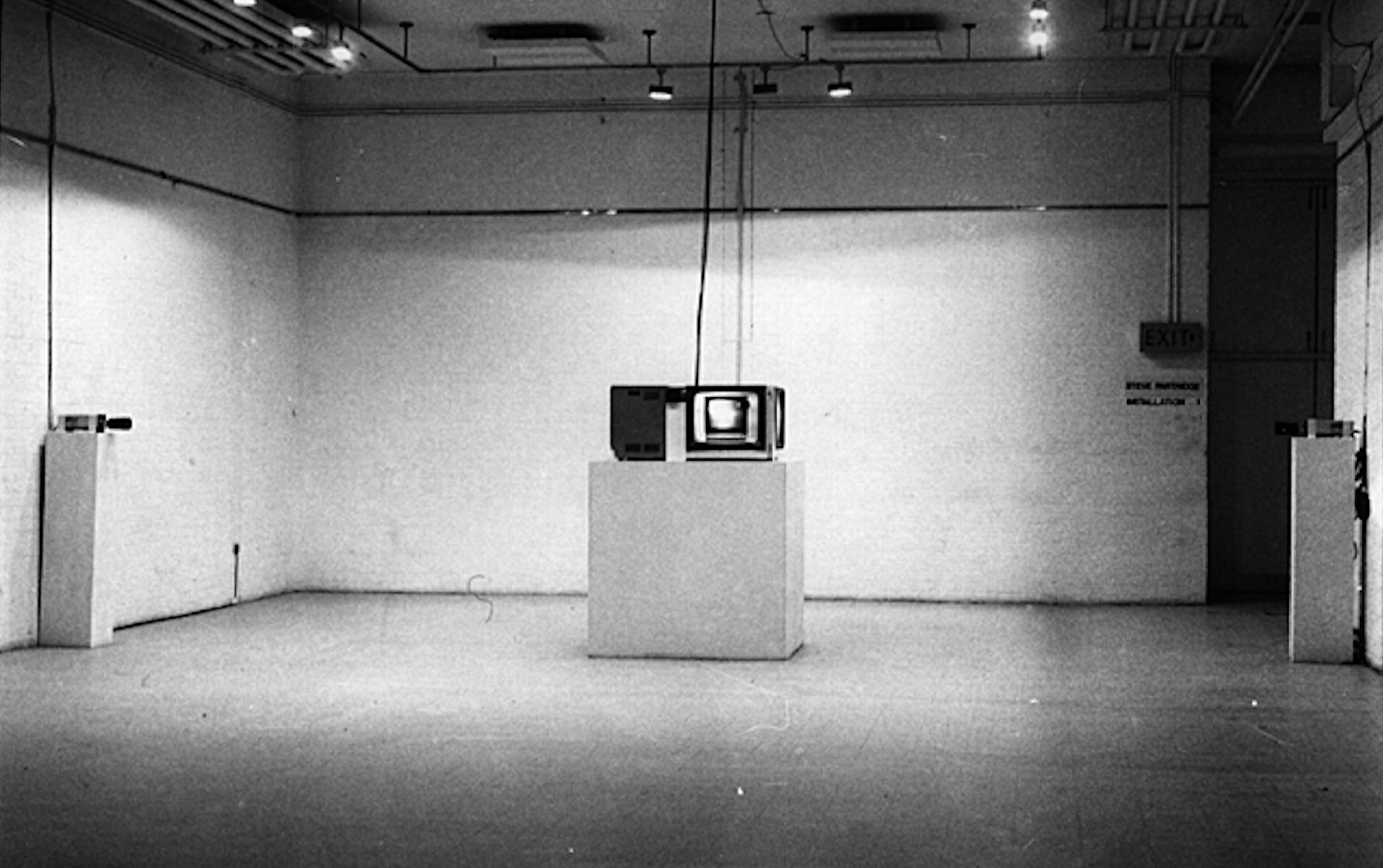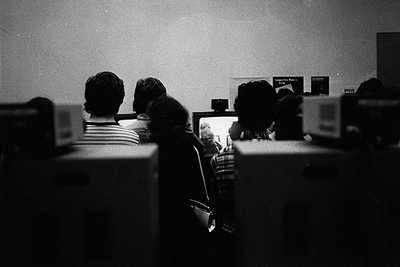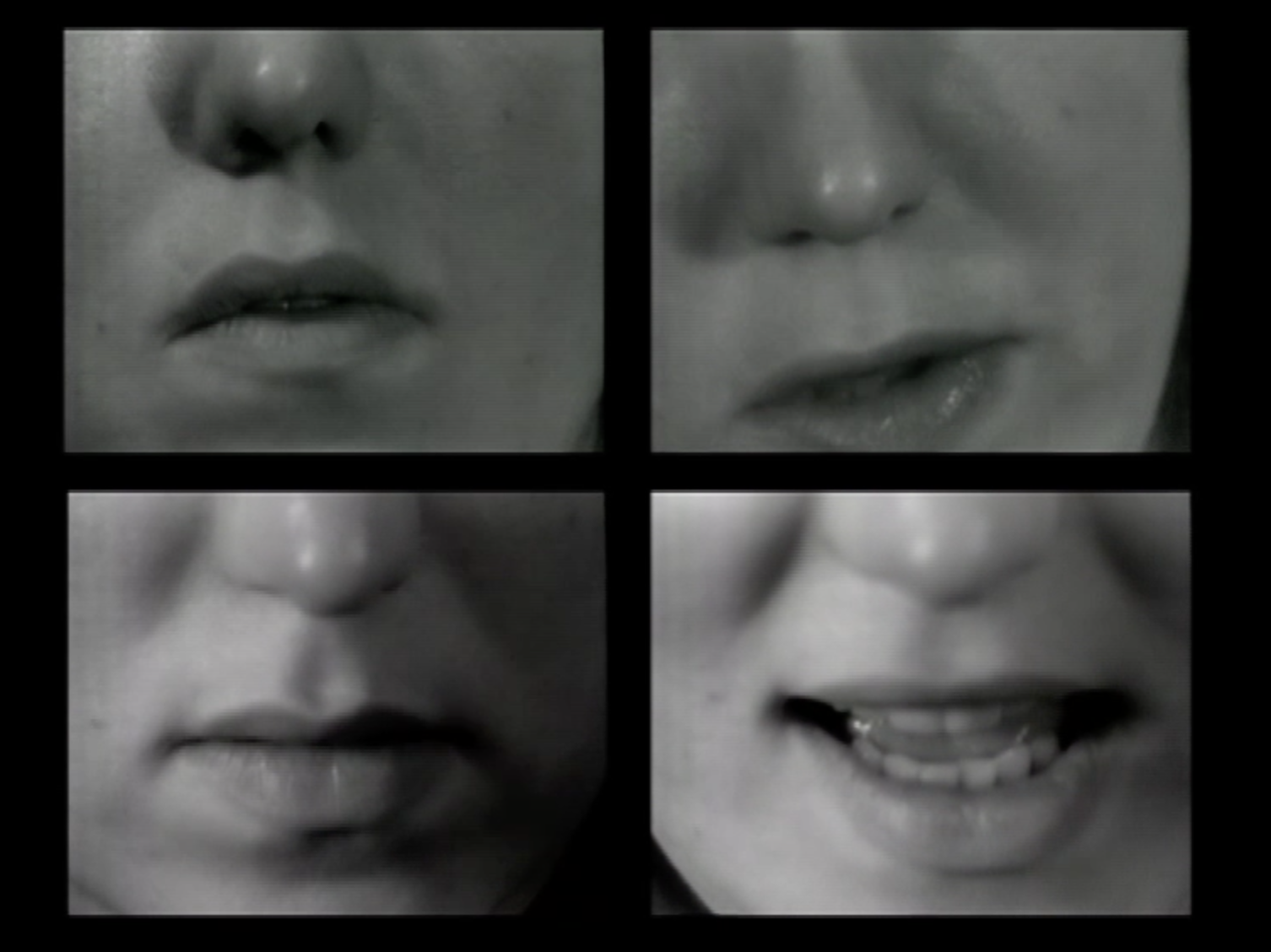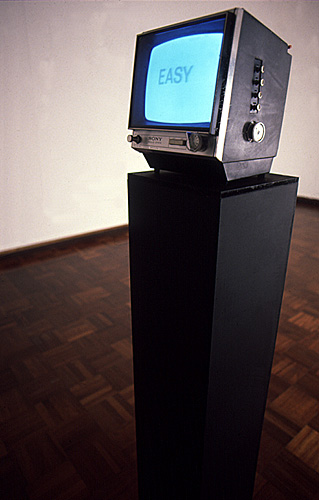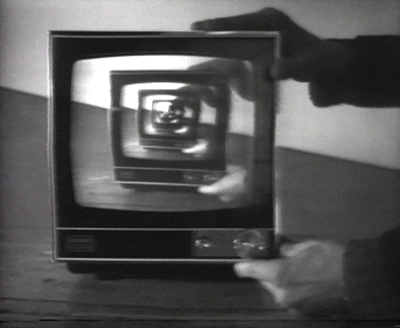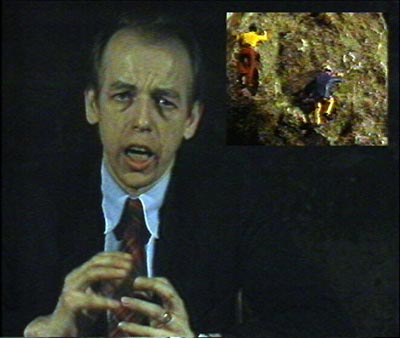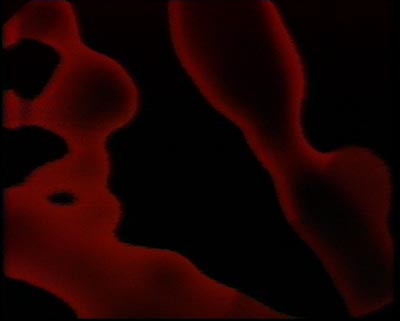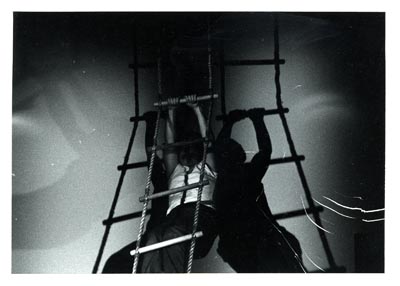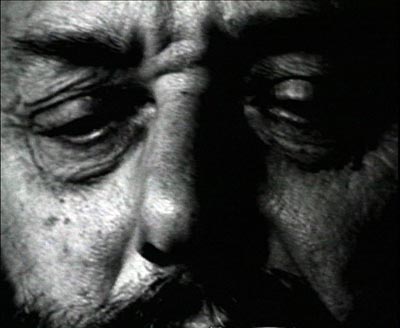Closed-circuit video installation using 4 cameras and 4 monitors and vision mixer. Cameras 1 and 2 were fed to a mixer which superimposed one on the other and fed monitors B and D. Cameras 3 and 4 fed monitors A and C and therefore the spectator could not see their image directly, only as a mix on monitors B and D as an iage within an image.
…
Continue reading “Installation No 1 (1976)”
David Hall checking his image in Installation No.1
“There is a characteristic of video which is peculiar to itself: camera switching. The importance of mixing/switching seems to have been overlooked in most analysis of video aesthetics; the dialogue mainly being concerned with the difference between the film frame and the video field. Using an electronic switcher/mixer it is possible to switch from camera to camera, and produce dissolves, wipes and fades all in ‘real-time’, whilst the same effects in film cannot be achieved without an interruption in time. …
Continue reading “8 x 8 x 8 (1975)”
‘Dialogue for four players is a video playback installation by Steve Partridge at the AIR Gallery during Mid-March. Four Monitors stand in a square facing the viewer in a darkened room: their own light is the only illumination. Each monitor is replaying a different tape; each showing the lower half of (the same?) woman’s face, thus each speaks its own contribution to the dialogue.
The Four tapes are fifteen minutes long, they are played simultaneously, …
Continue reading “Dialogue For Four Players (1978)”
‘Easy Piece was originally intended to be shown as an installation but it was not until 1996 that I actually got around to showing in that form.’ Stephen Partridge
“Partridge’s first works, which still hold good today, and continue to inspire new generations who see them, were essentially performance pieces. This was before the age of edit-suites, when crude splicing was the only option to straight duration and when all video-pictures were grey and visibly ‘degraded’. …
Continue reading “Easy Piece (1974)”
Quotes
“Partridge’s first works, which still hold good today, and continue to inspire new generations who see them, were essentially performance pieces. This was before the age of edit-suites, when crude splicing was the only option to straight duration and when all video-pictures were grey and visibly ‘degraded’. The image-word pulsing of Easy Piece, 1974, was made by fading in and out the key word of its title – ‘Easy’ – spoken on the soundtrack by a woman’s voice. …
Continue reading “Monitor (1974)”
A short video piece from the late eighties, Atherton as The Sculptor describes a site specific work involving life-size models of rock climbers installed on a mountainside somewhere in the Yorkshire Dales. Atherton delivers an underplayed and almost believable monologue about the realization of the project, before laying bare the entire charade at the end of the piece when it is revealed that the monumental sculpture is in fact a small stone on the table top with miniature plastic figures glued to it. …
Continue reading “Scaling Up”
“Many strands unite in The Sounds of These Words, 1990, a piece made – and shown – for tv broadcast as another kind of ‘intervention’, but which demands repeated viewing. Its portrait head is ‘a speaking likeness’ in the realist tradition, but streams of text and sampled sound are used to digitally rescore the typographic revolution of the early modernists, from Marinetti to Cage and concept art, for the age of audiovisual technology and semiotics. …
Continue reading “The Sounds of these Words (1989)”
Poster advertising ‘SPECTRO’ an exhibition of works by Steve Hawley, Tina Keane and Steve Littman, Newcastle-upon-Tyne, October 8 – 29.pdf here
‘British/Canadian Video Exchange ’84: installations, performances and videotapes’, a brochure detailing the video exchange with information on participating artists and works, includes Keane’s ‘Demolition/Escape’.pdf here
Brochure/programme for the Video Installation Show 1983 Air Gallery, includes information on ‘Demolition/Escape. …
Continue reading “Demolition/ Escape”
‘The Chronos Project’, Vertigo Autumn/Winter 1995 issue 5 – article on LeGrice’s work ‘Chronos Fragmented’.pdf here …
Continue reading “Chronos Fragmented”



